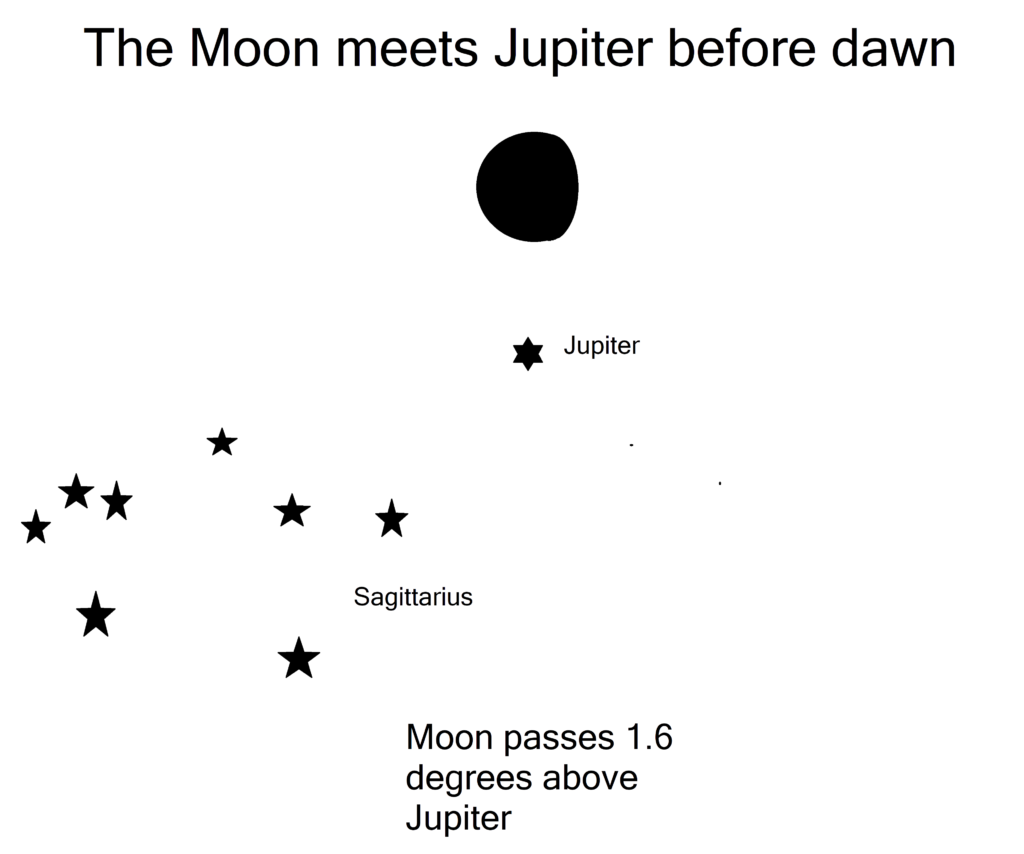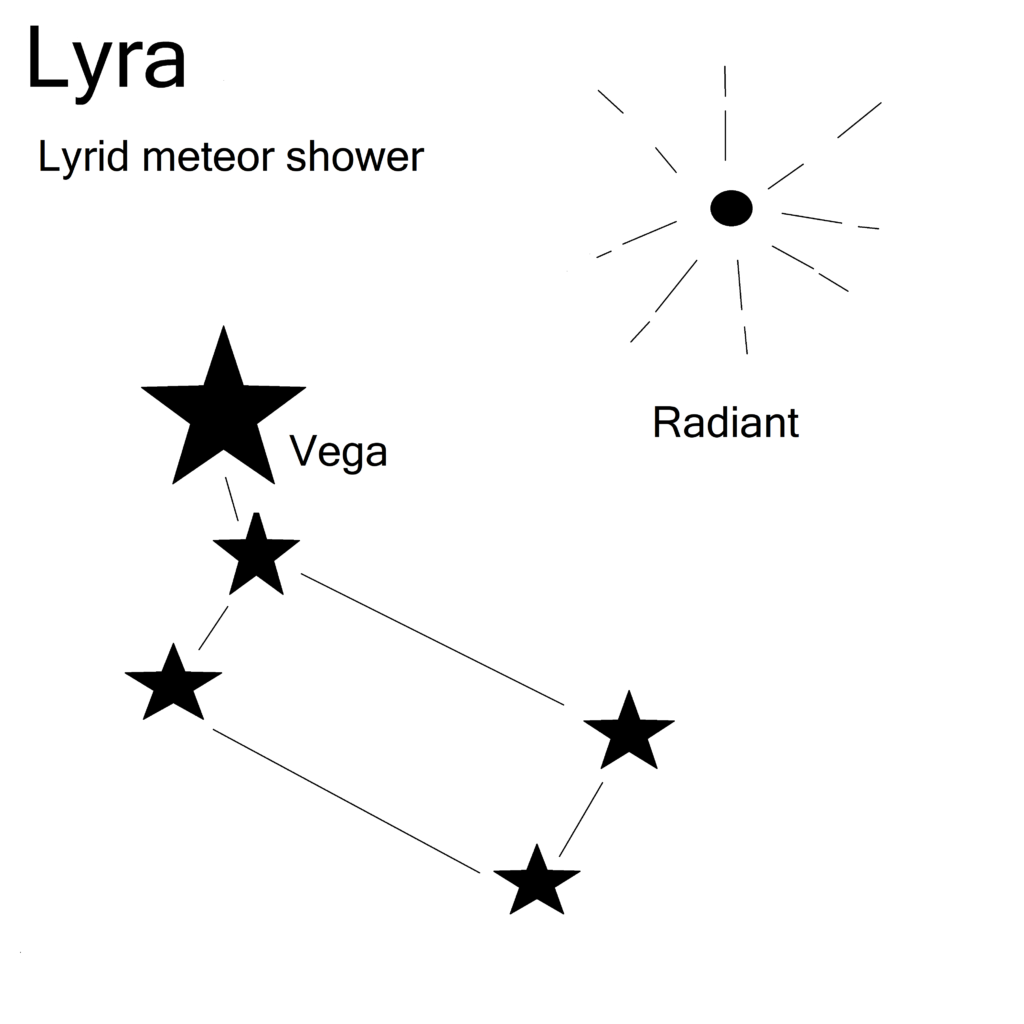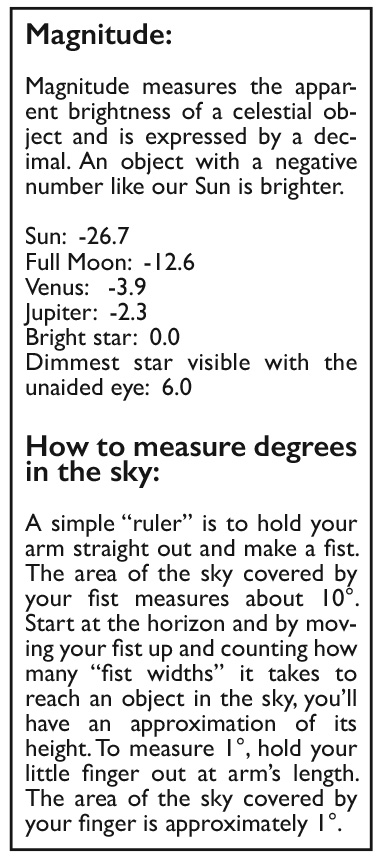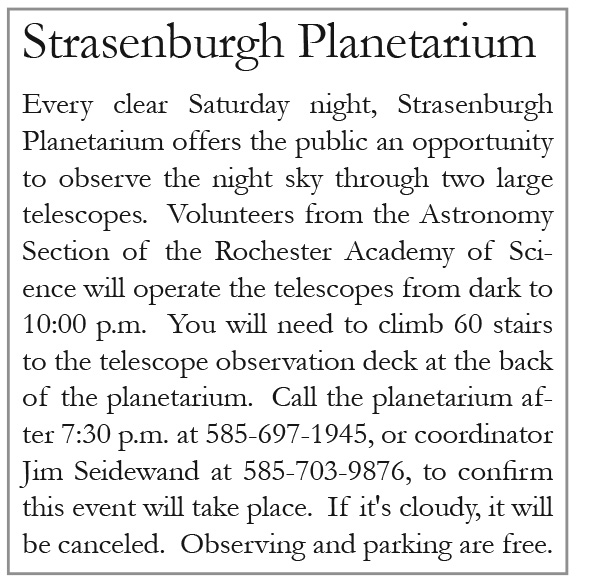The Night Sky – April
by Dee Sharples –
The warming temperatures in April announce that spring is actually here and enthusiasm is growing for observing the night sky.
This month the planet Jupiter can be found conveniently located about 30 degrees (three fist-widths) above the southern horizon in the early morning. Around 5:00 a.m. you can spot it shining like a bright star at magnitude -2.3 against the fainter background stars of the Milky Way.
A special observing opportunity will occur on the morning of April 23, when a waning gibbous Moon passes 1.6 degrees above Jupiter. A gibbous moon describes the phase between a half moon and a full moon. Waning refers to the fact that the Moon has already reached its full phase for the month and now less of its surface is being illuminated by the Sun as we see it from our vantage point on Earth. In contrast, a waxing gibbous moon is growing toward full phase as more and more of its surface is bathed in sunlight each night.
The constellation Sagittarius the Archer is also a highlight of the early morning sky this month. Slow-moving Jupiter will point the way and you will find the constellation much closer to the horizon and to the lower left of Jupiter. It looks very much like a teapot, with its handle on the left and its spout on the right. The Milky Way, the galaxy in which we live, stretches across the sky from overhead, down to the southern horizon passing right through the teapot, looking very much like steam rising from its spout. The faint river-like structure of the Milky Way is made up of countless stars in one of its spiral arms. A view through binoculars or a telescope will reveal many of the individual stars which are just a hazy glow to the naked eye. A dark moonless sky away from ambient lights will more fully reveal its beauty so look for it every clear morning.
The planet Venus still shines brilliantly in the east before sunrise this month. It’s the brightest object in the night sky, besides the Moon, dazzling at magnitude -3.9 looking like an extremely bright star.
Two beautiful star clusters can be seen in the evening sky in the west this month and the red planet Mars will help you locate them. Mars shining like a fairly bright orange-hued star at magnitude 1.5 will lie very high in the west after darkness falls. During the first week of April, the Pleiades star cluster, also called the Seven Sisters, can be found above and to the right of the planet. The Hyades, the second star cluster, will resemble the shape of a “V” and lie below and to the left of Mars. A pair of binoculars will enhance your view of these stunning star clusters, both located in the constellation Taurus the Bull.

The Lyrid meteor shower occurs this month between April 14 to 30, and reaches its peak in the very early morning hours of April 22. Unfortunately the Moon, just three days past its full phase, will brighten the sky and wash out the fainter meteors. You can be on the look-out for occasional meteors during the two-week active period but there will be fewer than at the peak. The area from which the meteors will appear to originate is near the bright star Vega in the constellation Lyra the Lyre which can be found in the eastern sky 30 degrees above the horizon by midnight and almost straight overhead by dawn.
There are many beautiful sights to enjoy in the night sky in April, although some will appeal more to early risers.
